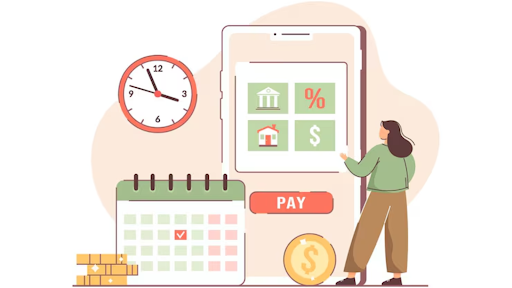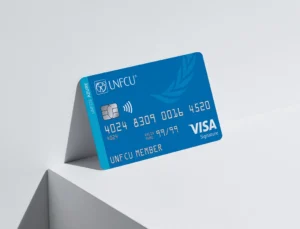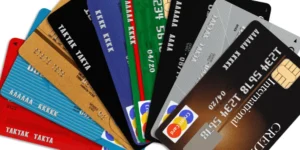For small and growing businesses, managing cash flow while establishing financial credibility is a constant balancing act. One of the most effective—but often underutilized—tools in a business owner’s toolkit is Net 30 payment terms.
But how do Net 30 payment terms compare to other common vendor payment structures like Net 15, Net 60, or even upfront payment requirements? And why does this 30-day window matter so much? Let’s break it down.
What Are Net 30 Payment Terms?
“Net 30” means the buyer has 30 days from the invoice date to pay the full amount owed—no interest, no penalties (as long as payment is on time). It’s a form of short-term, interest-free vendor credit that allows businesses to receive goods or services immediately while deferring payment.
Unlike consumer credit, many Net 30 accounts are tied to your Employer Identification Number (EIN) and report to business credit bureaus like Dun & Bradstreet, Experian Business, and Equifax Business. This makes them a powerful vehicle not just for cash flow management, but for building business credit independently of personal finances.
How Net 30 Stacks Up Against Other Payment Terms
1. Net 15: Tight Timeline, Limited Flexibility
Net 15 gives you just 15 days to pay. While this may appeal to vendors who want faster turnover, it offers little breathing room for small businesses—especially those with irregular income cycles or delayed client payments. For a new business still establishing its revenue rhythm, Net 15 can strain cash reserves and increase the risk of late payments.
2. Net 60 (or Net 90): Longer Isn’t Always Better
Net 60 or Net 90 terms sound generous—but they often come with trade-offs. Many vendors are offering extended terms:
- Require established business credit history
- Perform personal credit checks
- Limit product categories or impose minimum order thresholds
Additionally, longer terms can delay credit reporting benefits. Since business credit bureaus typically report monthly, a Net 90 cycle means fewer payment cycles per year—slowing your credit-building momentum.
3. Upfront or COD (Cash on Delivery)
Paying upfront eliminates credit risk for vendors but shifts all financial burden to the buyer. This model offers zero flexibility and no opportunity to build business credit. For startups or seasonal businesses, tying up capital in inventory or supplies before revenue comes in can be unsustainable.
4. 2/10 Net 30: A Discount Twist
Some vendors offer “2/10 Net 30”—a 2% discount if you pay within 10 days, otherwise the full amount is due in 30 days. This rewards fast payers but requires strong cash flow. While useful for cost-conscious businesses, it’s not ideal for those prioritizing credit building over minor savings.
Why Net 30 Is the Sweet Spot for Small Businesses
Net 30 strikes the perfect balance between vendor trust and buyer flexibility. Here’s why it’s a game-changer:
Optimal Cash Flow Management
A 30-day window aligns well with standard business billing cycles (e.g., monthly client invoicing). This lets you receive customer payments before settling vendor invoices, reducing the need for high-interest short-term loans.
Credit Building Without Personal Risk
Many Net 30 vendors report to major business credit bureaus and don’t require personal guarantees or credit checks. This allows new businesses to establish a credit profile using only their EIN—critical for separating personal and business finances.
Faster Credit Profile Development
With monthly payment cycles, you can generate 12 positive trade references per year—accelerating your business credit score growth. This paves the way for larger financing options like business credit cards, lines of credit, or equipment loans.
Low Barrier to Entry
Unlike traditional financing, Net 30 accounts often require only:
- A U.S.-based business
- An active EIN
- A business address and phone number
Some may charge a small setup or membership fee, but no collateral or extensive financial history is needed—making it accessible even to solopreneurs and startups.
Strategic Tips for Maximizing Net 30 Terms
- Prioritize Reporting Vendors: Only work with vendors that report to at least one central business credit bureau. Otherwise, you’re getting cash flow help—but not credit benefits.
- Pay On Time, Every Time: Late payments can hurt your business credit. Set calendar reminders or automate payments where possible.
- Diversify Your Vendor Mix: Use Net 30 accounts across categories—office supplies, branding, tech, and packaging—to show credit bureaus a well-rounded payment history.
- Start Early: The sooner you open your first Net 30 account, the faster your credit file matures. Many lenders look for at least 6–12 months of credit history.
The Bigger Picture: Financial Independence
Net 30 isn’t just about buying pens or printers—it’s about building a foundation for financial autonomy. Each on-time payment strengthens your business’s creditworthiness, reduces reliance on personal assets, and increases negotiating power with future lenders and vendors.
In a landscape where 82% of small business failures are tied to cash flow problems (U.S. Bank study), having flexible, interest-free credit terms can be the difference between survival and growth.
Final Thoughts
While other payment terms have their place, Net 30 offers the ideal blend of accessibility, flexibility, and credit-building power for emerging businesses. It’s not just a payment option—it’s a strategic financial tool that supports sustainable growth, operational efficiency, and long-term credibility in the business world.
If you haven’t explored Net 30 vendor accounts yet, now is the time. Start with one or two trusted suppliers, pay consistently, and watch your business credit—and confidence—grow.






